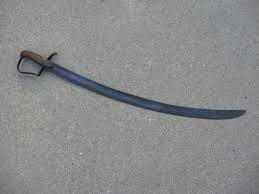I have attatched a few pictures.
also, would it be ok to use electrolysis to clean the sword?
any help would be appreciated.
[ Download ]

| Robert Sorrick wrote: |
| Cleaning out my girlsfriends mom's house after she passed away and found an old sword. Looked online for information. best I could guess was a late 1700s calvary sword. just a guess. nothing engraved that we can see. please help with the identification of this sword.
I have attatched a few pictures. also, would it be ok to use electrolysis to clean the sword? any help would be appreciated. |